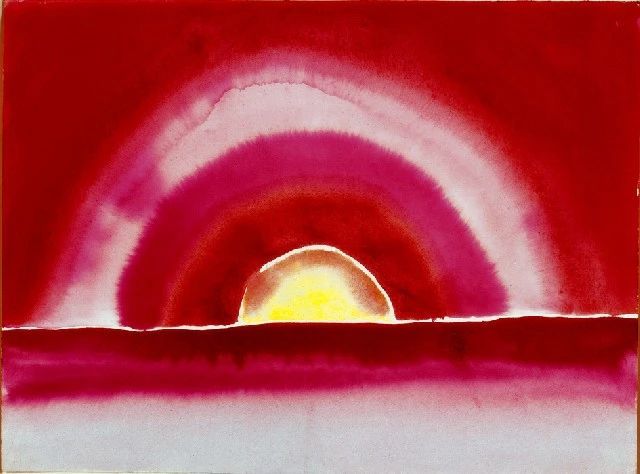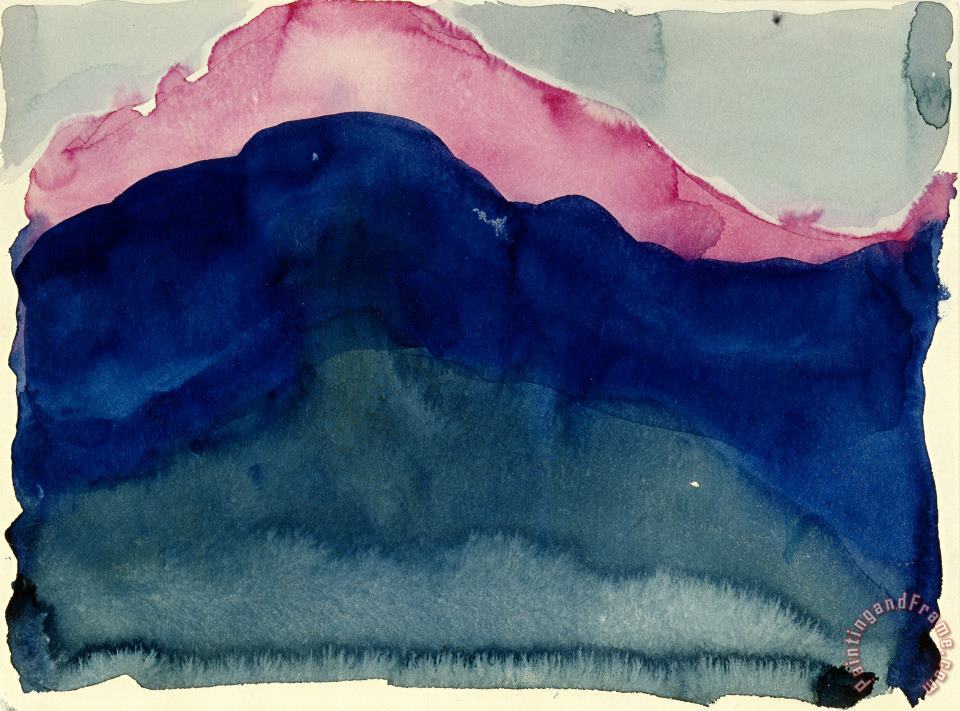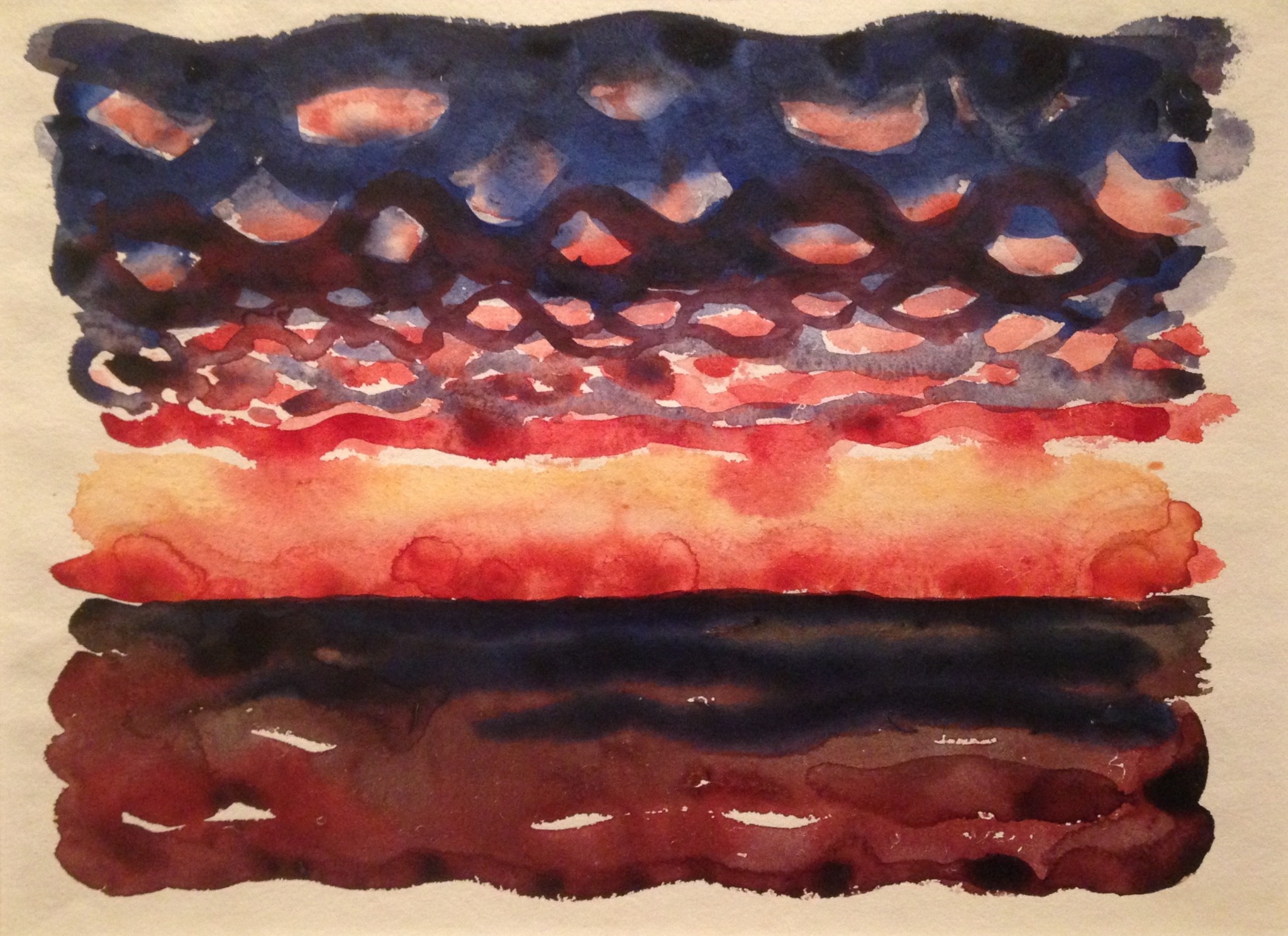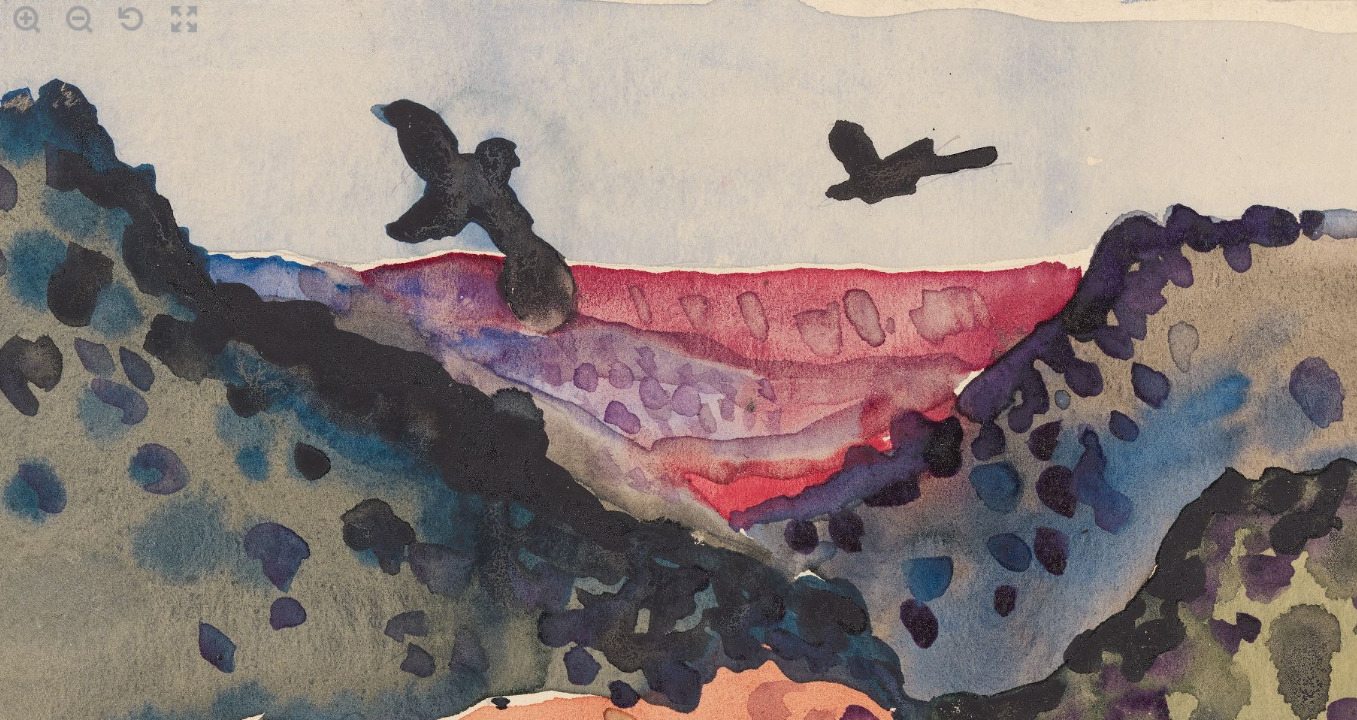“I was alone and singularly free, working into my own, unknown—no one to satisfy but myself.“
(Georgia O’Keeffe)
 Georgia O’Keeffe, Canyon with Crows, 1917, watercolour
Georgia O’Keeffe, Canyon with Crows, 1917, watercolour
A few posts ago I wrote about Georgia O’Keeffe’s watercolour “Morning Sky With Houses” (1916) and now I found myself in love with many more of O’Keeffe’s watercolours and I really want to share them with you all. “Canyon with Crows” is my second favourite these days, right after the “Morning Sky With Houses” because I cannot resists purple and orange together. In Georgia O’Keeffe’s vision the canyon is a groovy spectacle, a technicolor dream. In the background the pinks and blues are melting into purple, while the rich river of ruby red is paving its way through the fields of greens. Fields and patches of different colours and a canyon is created. Another wonderful detail here are the crows flying through the sky in a slightly ominous way, as if they warning us of an impending danger.
Georgia O’Keeffe arrived to Canyon, Texas in September 1916 to work as the head of the art department at the West Texas State Normal College. The vastness of the blue sky, the wildness of nature, the red sunsets and red soil, the hot winds blowing across the Texas prairie. The town of Canyon was named after the Palo Duro Canyon which means “hard wood”, referring to the juniper and mesquite trees that grow in that area. The wild, untamed nature of Texas proved to be very inspiring to O’Keeffe. The vibrant contrast between green foliage and red sandstone is stunning. Always adventurous, free and wild at heart, Georgia would spent many Saturdays hiking the risky steep and narrow paths of the canyon. The little town of Canyon with its structured pattern of streets and repetitive rows of houses was not something that O’Keeffe found particularly inspiring. In fact, she not only found it dull but also confusing. On one occassion she went out to mail a letter and she had trouble finding her way home because the streets looked so similar. Her love of wilderness and open spaces will be even more prominent later in life, especially when contrasted with Alfred Stieglitz’s love for the safety and predictability of urban spaces.
The watercolour “Red Mesa” is perhaps the most similar in theme and style to the “Canyon with Crows” but all of O’Keeffe’s watercolours painted in the short time period from 1916 to 1917 have that playfulness and vibrancy which I adore so much. O’Keeffe was particularly fascinated with sunrises. She loved the way the first rays of the sun would come into her room and paint it in soft vanilla yellow shades. Her watercolour “Sunrise” bellow is spectacular, painted in bright red and magenta pink shades. The colours look like they are melting into one another. While this watercolour isn’t realistic, the depiction of the intensity of the sunrise is realistic. Sunrises and sunsets are very strong in colour. Also, today is Georgia O’Keeffe’s birthday so why not enjoy her watercolours!
Georgia O’Keeffe, Canyon with Crows, 1917, watercolour, details

Georgia O’Keeffe, Sunrise, 1916

Georgia O’Keeffe, Pink And Blue Mountain, 1916, watercolour

Georgia O’Keeffe, Sunrise and Little Clouds No. II, 1916, watercolor on paper

Georgia O’Keeffe, Red Mesa, 1917, watercolour













